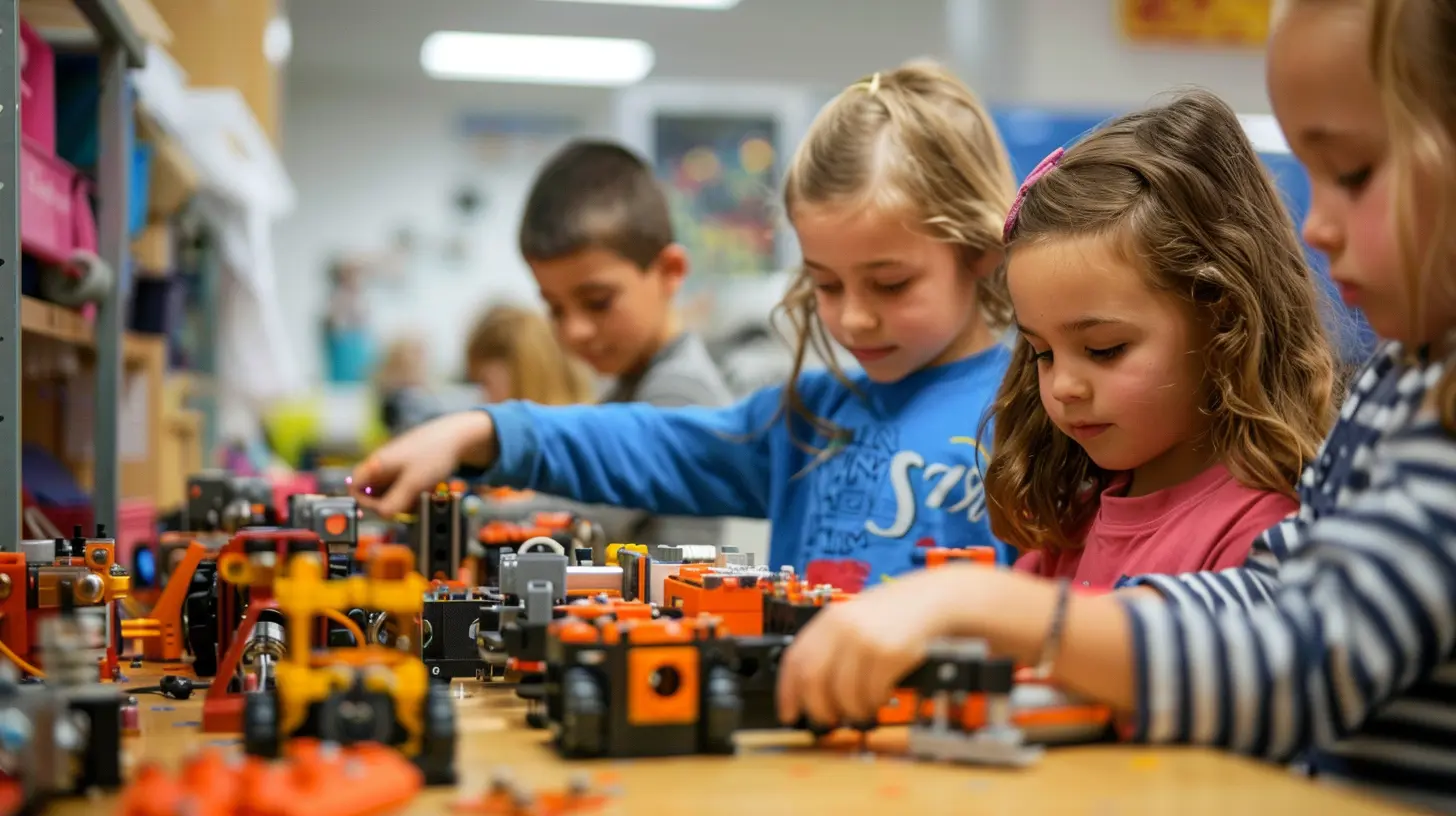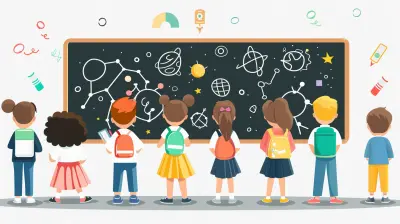The Importance of Early Exposure to STEM in Elementary Education
22 November 2025
Let’s face it—our kids are growing up in a tech-driven world. From smart toys to educational apps, they’re already surrounded by gadgets and gizmos that touch on science, technology, engineering, and math (aka STEM). But here’s the thing: while kids scroll, tap, and swipe their way through childhood, we’ve got a golden opportunity right in front of us. We can use this natural curiosity to introduce them to the wonders of STEM... early on!
In this article, we’re going to dive deep (but not boring!) into why early exposure to STEM in elementary education isn’t just important—it’s crucial. If you’re a parent, teacher, or someone who simply wants the best for our future innovators, this one's for you.
What Is STEM, Anyway?
Before we go all-in, let’s break down what STEM actually means. It stands for:- Science
- Technology
- Engineering
- Mathematics
These four fields aren’t just about labs, computer screens, or dusty textbooks. They’re about solving problems, exploring how things work, and using creativity to build a better future. Cool, huh?
Why Should STEM Start in Elementary School?
You might be wondering, “Isn’t STEM kind of intense for little kids?” That’s a fair question. But the truth is, kids are natural-born scientists. Ever watched a five-year-old ask “why?” a hundred times before breakfast? That’s curiosity—pure and untamed. And guess what? That curiosity is the foundation of STEM learning.Starting STEM early helps kids:
- Develop critical thinking skills
- Learn how to solve problems creatively
- Get comfortable with failure (yes, that’s a good thing!)
- Build teamwork and communication skills
- Gain confidence in handling real-world challenges
Early exposure isn’t about teaching calculus in kindergarten—it’s about planting the seeds of curiosity and letting them grow.
The Wonder Years: Why Elementary School is the Sweet Spot
Think of elementary school years as the “golden window” for learning. At this age, kids are like sponges, soaking up everything around them. They're also fearless learners. They haven’t yet developed a fear of “being wrong,” which makes them ideal explorers in the world of STEM.When children engage in STEM activities in the early grades, they begin to develop a mindset that embraces experimentation, persistence, and innovation. Basically, you’re building future scientists, engineers, and tech leaders without them even realizing it.
Real Benefits of STEM Learning for Young Minds
Alright, let’s get into the real talk—what do kids actually gain from early STEM exposure?1. Builds Curiosity and Creativity
Ever watched a child build a tower out of blocks just to knock it down and build it again? That’s engineering in action. STEM turns ordinary play into brain-building powerhouses. It fuels their natural need to explore and experiment.2. Boosts Problem Solving
From puzzles to coding games, STEM teaches kids that there’s more than one way to solve a problem. It encourages them to think outside the box and try different approaches—pretty handy life skills, right?3. Strengthens Academic Performance
Here's a bonus: kids who engage in STEM activities often show improvement in subjects like reading and writing, too. Why? Because STEM activities improve reasoning and comprehension, which spills over into other academic areas.4. Builds Resilience and Grit
Failure is a part of learning, but in STEM, failure is not the end—it’s just step one. Getting a robot to move or a science experiment to succeed may take a few tries. That “try again” attitude sets kids up for long-term success, whatever path they choose.5. Encourages Teamwork
Many STEM projects are collaborative. Whether it’s building a bridge with spaghetti or coding a mini robot, kids learn to share ideas, listen to each other, and work toward a common goal.Closing the Gap: Why Early STEM Exposure Matters for Everyone
Let’s talk real talk for a second. For years, STEM fields have had diversity issues, with women and underrepresented minorities making up a small percentage of professionals. The key to changing that? Start early. Really early.By introducing STEM to all kids—regardless of gender, race, or background—we help level the playing field. We send a powerful message: “You can be a scientist. You can be a coder. You can invent the next big thing.”
The earlier that message gets into young minds, the more likely it is to stick.
Easy Ways to Incorporate STEM at Home and in Classrooms
So now you’re probably thinking, “Okay this sounds great, but how do we actually do it?” Good news—it doesn’t require fancy equipment or a PhD in robotics. Here are some fun and simple ideas:At Home
- Build with Blocks or LEGO®: Creates a foundation for engineering and spatial understanding.- Cooking Together: Teaches early chemistry and math (measurements, sequences, reactions).
- Nature Walks: Encourage kids to observe animals, plants, and weather patterns.
- STEM Kits: Affordable kits are available that guide kids through science experiments or beginner coding.
In the Classroom
- STEM Challenges: Assign weekly challenges like “Build a bridge that holds weight using only paper.”- Use Storybooks: Yes, you can connect STEM with storytelling! Books like "Rosie Revere, Engineer" inspire curiosity.
- Incorporate Tech: Use age-appropriate coding games like Scratch or Tynker.
- Field Trips: Visit science centers, planetariums, or even local farms to connect learning with the real world.
The Role of Teachers and Parents in Sparking STEM
Kids don't need to be geniuses to enjoy STEM—all they need is encouragement. This is where adults come in. You don’t need to have all the answers. Seriously, it's okay to say, “Let’s find out together.” That shared curiosity can be the spark that drives lifelong passion.Parents and teachers can:
- Praise effort, not just outcomes
- Encourage questions (even the weird ones!)
- Celebrate mistakes as learning moments
- Provide access to STEM-related resources
- Serve as role models by being curious themselves
STEM is More Than Just a Trend—It’s the Future
Let’s be honest, the jobs of tomorrow are deeply rooted in STEM. From clean energy and climate science to artificial intelligence and biotechnology, the future looks STEMmy. And the kicker? Many of these future jobs don’t even exist yet.We can’t predict the future, but we can prepare our kids for it. And that preparation begins not in college, not even in high school—but in elementary school, where wonder and imagination are at their peak.
Wrapping It All Up: Early STEM is a Gift, Not a Chore
At the end of the day, early exposure to STEM isn’t about turning every kid into a scientist. It’s about giving them the tools to think critically, solve problems creatively, and approach the world with curiosity and confidence.So whether you’re a parent, teacher, or just someone who loves to see kids thrive, remember this: when we introduce STEM early, we’re not just preparing kids for school—we’re helping them prepare for life.
Let’s inspire the next generation of thinkers, doers, and dreamers. One LEGO brick, math puzzle, or paper tower at a time.
all images in this post were generated using AI tools
Category:
Stem EducationAuthor:

Monica O`Neal
Discussion
rate this article
1 comments
Zinnia Fry
This article highlights the crucial role of early STEM exposure in fostering critical thinking and problem-solving skills in young learners. By integrating STEM concepts into elementary education, we can inspire curiosity and lay a strong foundation for future academic success.
November 22, 2025 at 3:16 AM


